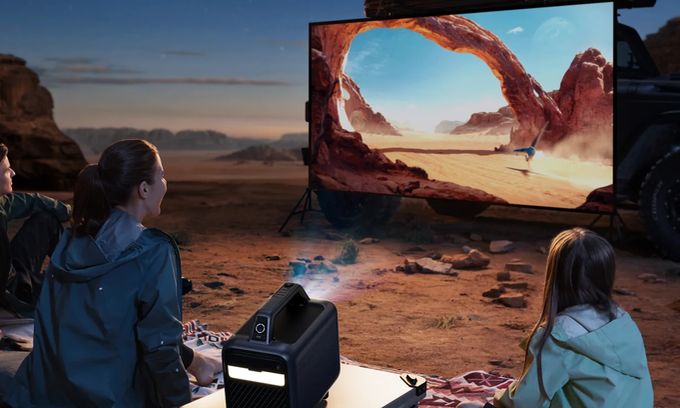For several years now, projectors have been one of the fastest growing segments of consumer electronics. This is due to several factors, including:
– successful and fast development of light engines based on Solid State Light Sources (SSL) with LEDs and laser LEDs. They are compact, have a long lifespan, low heat, provide high brightness and wide color gamut. In turn, the compact size opened up the possibility of developing ultra-portable (pocket, pico, etc) models;
– pixel shift-based XPR (Xpanded Pixel Resolution) technology has significantly reduced the price of 4K DLP projectors, enabling the display of 4K content using relatively cheap 1080p DMD (Digital Micromirror Device) chipsets;
– screen mirroring and streaming technologies have eliminated the problem of content for projectors;
– Ultra Short Throw (UST) models have radically simplified the placement of projectors in the living room. As known, they form an image from 100″ from a distance of only a few dozen centimeters.
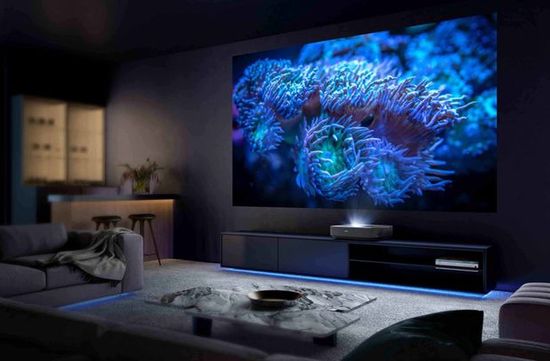
In turn, the placement against the wall eliminates the need for wires on the floor or complicated ceiling mounting, which is one of the main problems of mid-focal projectors. Today, they are increasingly replacing TVs in the living room as an alternative.
New projectors 2023
Of course, companies adequately respond to consumer market conjuncture by expanding the range of their products every year. This year was no exception. For example, the list of new UST projectors includes:
–BenQ V5000i – $ 3,500;
–Philips Screeneo U5 – € 3,500;
–Visionair-e Platinum Vision 3000 – $ 3,750;
– LG HU715Q – $ 3,000;
–Epson EB-810E – $ 3,300;
– Epson EpiqVision Ultra LS800 – $ 3,120;
– CHiQ B8U and B7U – $ 3,120 and up to $ 2,000;
–Optoma CinemaX D2 – $ 2,700;
–Formovie Theater – $ 3,000;
–Hisense PL1 – € 2,085;
–Hisense PX1-PRO – $ 2,700.
The list of new portable projectors includes Anker Nebula Capsule 3, Xiaomi Formovie V10F, Yaber Pico T1, ASUS ZenBeam Latte L2 and XGIMI Mogo 2 Pro.
But of course companies don’t forget about traditional mid-focal projectors. A partial list of their new products includes:
– Optoma ML1080/ML1080ST, HZ40HDR, GT2000HDR and GT2100HDR – $1,000 – $1,600;
– JmGO N1, N1 Pro and N1 Ultra 4K – $ 1,000 – $ 2,300;
– BenQ TK860i and HT4550i 4K priced at $ 1,800 and $ 3,000, respectively.
Of course, Epson and Anker are also actively expanding their lineups. This summer, the companies introduced the portable outdoor Anker Nebula Mars 3 projector and the versatile Epson Pro EX11000.
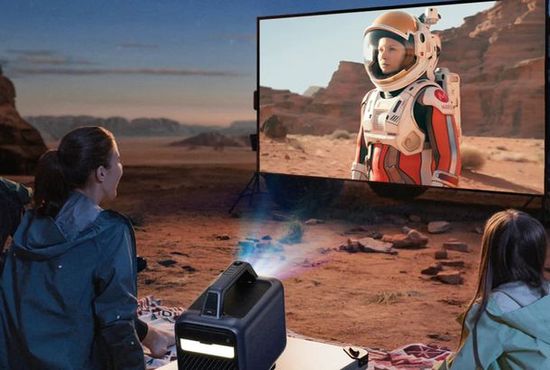
Anker Nebula Mars 3
As known, the company introduced Mars II in March 2018, which was discontinued in June 2021. In March 2019 Anker introduced its improved Mars II Pro version, which is still available for ~$ 550. Anker Nebula Mars 3 is the continuation of this popular series.
All models are single-chip DLP projectors with LED light source. Mars II and Pro have HD (720p) resolution and provide 300 ANSI Lumens and 500 ANSI Lumens brightness, respectively. The resolution and brightness of the new Mars 3 reaches Full HD (1080p) and 1,000 ANSI lumens. However, the model also has Eco mode with a brightness of only 300 ANSI lumens and 25% volume. In this mode, its 185Wh built-in power bank provides up to five hours of viewing vs 2 hours in Standard mode. What’s more, RoamPower technology makes it possible to use Mars 3 as a power bank to charge smart devices.
Traditionally for outdoor models, the projector has a high protection level. According to the company, Mars 3 has successfully passed IPX3 waterproof testing, the 0.5 m standard cement floor drop test, and dust resistance against particles of up to 0.7 mm.

The powerful built-in 40W 3-way speaker with Dolby Audio successfully solves the problem of sound outdoors.
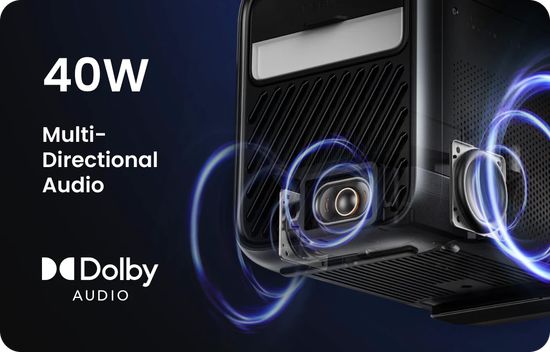
Intelligent Environment Adaptation with a built-in intelligent sensor completes autofocus, keystone correction, and Screen Fit in just 3 seconds.
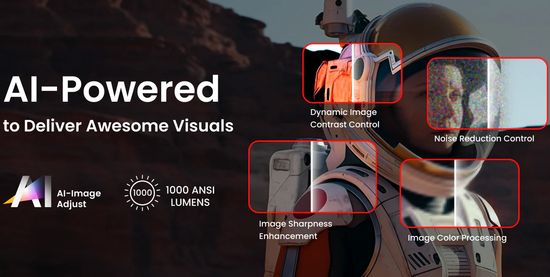
Mars 3 has auto focus and horizontal / vertical digital keystone. All controls are integrated into the handle.
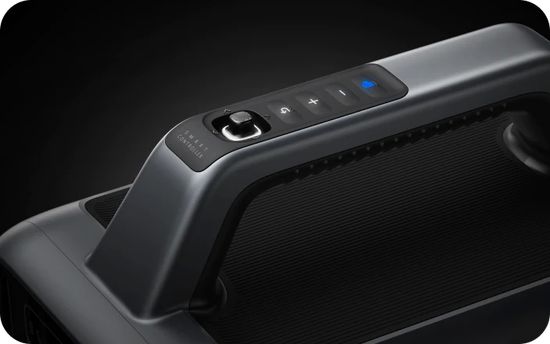
Smart functionality also corresponds to the modern premium level. Model is compatible with Android TV 11.0 (400,000+ movies and 7000+ apps), supports Google and has Chromecast built-in.
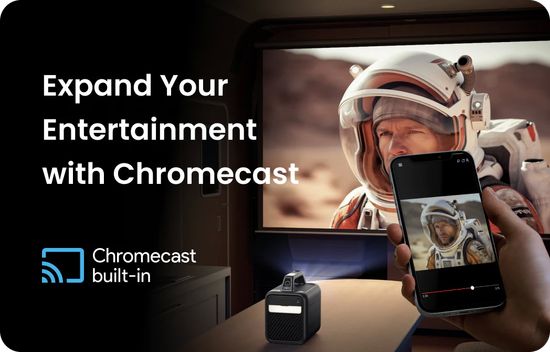
Unfortunately, its contrast ratio is only 400:1.
Epson Pro EX11000 (V11HA72220)
The 3-chip Epson Pro EX11000 LCD projector has traditional design.
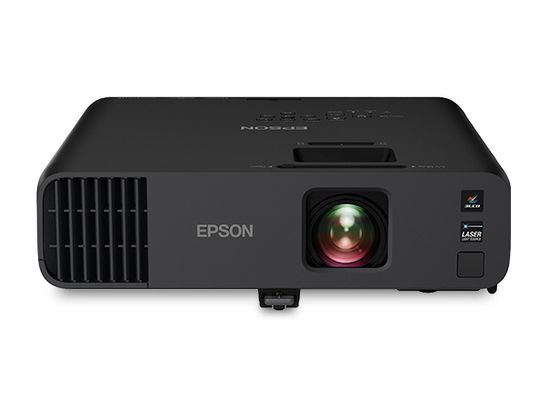
It’s closest to the EX9240 of 2021. The list of their differences includes (EX11000 vs EX9240):
– price – $ 1,300 vs $ 850;
– Laser Phosphor vs lamp;
– brightness – 4,600 ISO Lumens vs 4,000 ISO Lumens;
– dynamic contrast – 100,000:1 vs 16,000:1;
– 3D mode – no vs Full HD 3D.
This model uses ALDP 3.0 – based (Advanced Laser Phosphor Display) light engine. It delivers 4,600 ISO lumens (21118 standard), which equates to ~3,680 ANSI lumens. In comparison, the brightness of UST laser models starting at $ 2,000 ranges from 2,000-3,000 ANSI lumens. What’s more, 3LCD technology works without a color wheel, eliminating color loss. Accordingly, their white brightness is always identical to color brightness (Color Light Output).
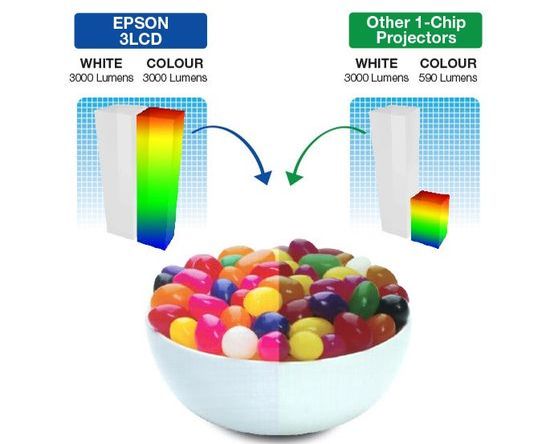
Therefore, 4,600 ISO lumens will easily provide bright, saturated colors even in diffuse daylight without additional dimming.
However, other specs also correspond to the premium level. Its dynamic contrast ratio reaches 100,000:1, providing a very crisp image. The 1.6X manual optical zoom supports up to 300″ diagonal, which is handy for conferences, for example. The built-in 16W speaker is also quite sufficient for the average room. Projector supports screen mirroring with Miracast. In fact, only Full HD resolution limits its positioning as a premium models. But, 1080p resolution is quite adequate for the price of $ 1,300.
The model supports almost all popular settings, including:
– auto vertical keystone correction up to ±30°.
Built-in picture skew sensor automatically analyzes the picture and instantly corrects the vertical keystone;
– manual horizontal keystone correction up to ±30°;
– manual focus;
– scaling from 16:9 native aspect ratio to 4:3 (no 21:9 aspect ratio for Microsoft Teams Front Row).
Conclusion
Considering the price, specs and functionality, both models have excellent marketing prospects due to their superb value for money.
To be fair, the (26 cm x 16 cm x 25 cm) dimensions and 4.5 kg (9.9 lbs) weight of the Anker Nebula Mars 3 hardly match its classification as a portable model. For comparison:
– Anker Nebula Capsule 3 – (17 cm x 8 cm x 8 cm) and 1.0 kg (2.1 lbs);
– Xiaomi Formovie V10F – (20 cm x 20 cm x 21 cm) and 3.8 kg;
– Yaber Pico T1 – (1 cm x 7 cm x 15 cm) and 0.1 kg (0.3 lbs);
– ASUS ZenBeam L2 – 0.3 kg;
– XGIMI Mogo 2 Pro – (16 cm x 12 cm x 11 cm) and 1.1 kg (2.4 lbs).
But the model offers 1,000 ANSI lumens brightness, 185Wh built-in power bank, powerful built-in 40W 3-way speaker and outdoor design with increased protection. The implementation of such options is hardly available in an ultra-compact package.
In general, Nebula Mars 3 is quite claim to be the leader in this class.
The Japanese giant is positioning the Epson Pro EX11000 as a conference room projector. But given its specs, the new model is also great as a Home Theater projector. Of course, Full HD (1080p) resolution isn’t exactly premium. But 4,600 ISO Lumens brightness and 100,000:1 dynamic contrast ensure high image quality even in diffuse daylight without additional darkening. At $ 1,300, the Epson Pro EX11000 seems like a good choice as a Home Theater model.
This video shows Netflix settings for Nebula Mars 3.
